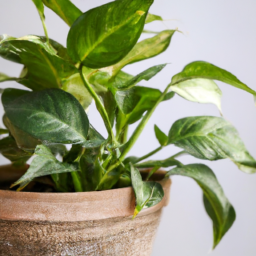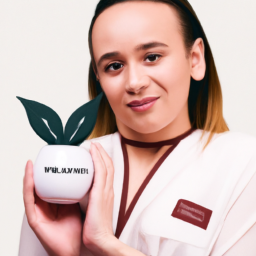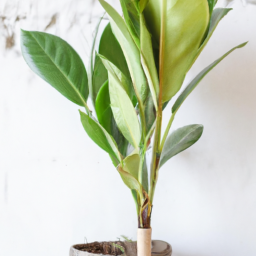
Are you a plant lover but struggle to keep them alive? Don’t worry, we’ve got you covered! In this blog post, we will be discussing the best easy plant to take care of. Whether you have a busy schedule or lack a green thumb, these low-maintenance plants are perfect for you. Say goodbye to wilted leaves and constant watering, and say hello to thriving greenery in your home or office. So, let’s dive in and explore the world of easy-to-care-for plants that will bring life and beauty to any space without demanding too much of your time and attention.
Low-Maintenance Indoor Plants
Welcome to our guide on low-maintenance indoor plants! If you’re new to gardening or simply don’t have much time to dedicate to plant care, these easy-to-care-for plants are perfect for you. In this article, we will explore a variety of indoor plants that require minimal attention while still adding beauty and freshness to your living space. So, let’s dive in and discover the perfect low-maintenance plant companion for you!
1. Snake Plant
The Snake Plant, also known as Sansevieria or Mother-in-Law’s Tongue, is a popular choice for those seeking an easy-to-care-for plant. It is native to West Africa and features long, upright leaves that are often variegated with shades of green and yellow. This plant is known for its ability to purify the air by removing toxins such as formaldehyde and benzene.
When it comes to care, the Snake Plant thrives in low light conditions, making it ideal for those with limited access to natural sunlight. It can tolerate a wide range of temperatures and doesn’t require frequent watering. In fact, overwatering can be detrimental to this plant, so it’s best to let the soil dry out between waterings. With minimal effort, the Snake Plant will continue to grow and bring a touch of elegance to your indoor space.
If you’re looking to propagate your Snake Plant, it’s as easy as dividing the rhizomes or planting leaf cuttings in well-draining soil. This way, you can expand your collection or share the joy of low-maintenance gardening with your friends and family.
2. ZZ Plant
The ZZ Plant, scientifically known as Zamioculcas zamiifolia, is another excellent choice for those seeking a low-maintenance indoor plant. Native to Eastern Africa, this plant has glossy, dark green leaves that add a touch of lushness to any room. The ZZ Plant is well-known for its ability to tolerate neglect and thrive in low-light conditions.
When it comes to care, the ZZ Plant is incredibly forgiving. It can survive in a wide range of light conditions, from bright indirect light to almost complete darkness. This makes it an excellent choice for offices or rooms with limited natural light. Watering is also minimal with this plant, as it is highly drought-tolerant. It’s best to let the soil dry out completely between waterings to avoid overwatering, which can lead to root rot.
Propagation of the ZZ Plant is relatively easy. You can divide the rhizomes or plant leaf cuttings in well-draining soil. With patience, you’ll soon have a collection of ZZ Plants to enjoy or share with fellow plant enthusiasts.
3. Pothos
Pothos, also known as Devil’s Ivy, is a popular choice among plant enthusiasts due to its attractive heart-shaped leaves and trailing vines. Native to the Solomon Islands, this plant is incredibly versatile and can be grown in various conditions, making it perfect for beginners or those with busy schedules.
One of the significant advantages of Pothos is its ability to thrive in low light conditions. It can tolerate fluorescent lighting, making it an excellent choice for offices or rooms with minimal natural light. Pothos also prefers to dry out between waterings, so it’s best to let the soil dry before watering again. Overwatering can lead to root rot, so be sure to check the moisture level before reaching for that watering can.
Propagation of Pothos is a breeze. You can take stem cuttings and place them in water or directly into well-draining soil. Within a few weeks, you’ll notice roots forming, and your Pothos family will continue to grow.
These are just a few examples of low-maintenance indoor plants that can thrive with minimal care. Whether you choose the Snake Plant, ZZ Plant, Pothos, or any other low-maintenance plant, remember to enjoy the process and the beauty these plants bring to your indoor space. Happy gardening!

Beginner-Friendly Houseplants
Welcome to the world of indoor gardening! If you’re new to taking care of plants or simply looking for some low-maintenance options, you’ve come to the right place. In this guide, we will explore a variety of beginner-friendly houseplants that are not only easy to care for but also bring beauty and freshness to your home.
1. Snake Plant
The Snake Plant, also known as Sansevieria or Mother-in-Law’s Tongue, is a popular choice for beginners due to its hardy nature and low maintenance requirements. This plant thrives in a wide range of light conditions, from low to bright indirect light, making it suitable for almost any room in your home.
One of the key benefits of the Snake Plant is its ability to purify the air by removing toxins such as formaldehyde and benzene. It has long, upright leaves that come in various shades of green, making it an attractive addition to any space. To care for your Snake Plant, water it sparingly, allowing the soil to dry out between waterings. This plant can tolerate neglect and is perfect for those who tend to forget about watering.
Propagation is also a breeze with the Snake Plant. You can easily grow new plants by dividing the rhizomes or leaf cuttings. This not only allows you to expand your collection but also makes it a great plant to share with friends and family.
2. Pothos
Pothos, scientifically known as Epipremnum aureum, is another excellent choice for beginners. This trailing vine plant is incredibly versatile and can adapt to various light conditions, although it thrives in bright indirect light. Its heart-shaped leaves come in different shades of green, making it a visually appealing addition to your indoor space.
One of the best features of Pothos is its ability to purify the air by removing common indoor pollutants. Additionally, it is known for its resilience and ability to bounce back even if you forget to water it occasionally. However, it’s important to avoid overwatering, as Pothos prefers slightly dry soil between waterings.
Propagation of Pothos is simple and rewarding. You can propagate this plant using stem cuttings in water or directly in soil. Watching the roots grow and seeing new leaves emerge is a satisfying experience that further adds to the joy of owning this beginner-friendly houseplant.
3. ZZ Plant
The ZZ Plant, scientifically known as Zamioculcas zamiifolia, is a great choice for beginners who want a plant that can thrive in low-light conditions. This tropical plant features glossy, dark green leaves that grow in an upward fashion, adding a touch of elegance to any room.
The ZZ Plant is incredibly forgiving when it comes to watering. It can tolerate periods of drought and prefers to be slightly underwatered rather than overwatered. This makes it an ideal choice for those who may be prone to overwatering their plants.
Another advantage of the ZZ Plant is its ability to adapt to various light conditions. While it can tolerate low light, it can also thrive in bright indirect light. Just make sure to avoid direct sunlight, as it can scorch the leaves.
Propagation of the ZZ Plant can be done by dividing the rhizomes or using leaf cuttings. However, it’s worth noting that the ZZ Plant grows slowly, so patience is key when waiting for new growth.
These are just a few examples of beginner-friendly houseplants that can bring life and beauty to your indoor space. Remember to consider factors such as light conditions, watering requirements, and ease of propagation when selecting plants for your home. With a little care and attention, you’ll be on your way to becoming a successful indoor gardener!

Hassle-Free Outdoor Plants
Are you someone who loves the idea of having a beautiful garden but lacks the time or expertise to maintain it? Don’t worry, we’ve got you covered! In this article, we will introduce you to some hassle-free outdoor plants that are incredibly easy to take care of. Whether you are a beginner or a busy individual, these plants will thrive in your garden with minimal effort. So, let’s dive in and explore the world of low-maintenance greenery!
1. Succulents
Succulents are the epitome of hassle-free outdoor plants. These unique plants have thick, fleshy leaves and stems that store water, allowing them to survive in arid conditions. They come in a variety of shapes, sizes, and colors, making them a perfect addition to any garden or patio.
When it comes to caring for succulents, the key is to provide them with well-draining soil and ample sunlight. They prefer bright, indirect light, so placing them near a sunny window or in a spot with partial shade is ideal. Watering succulents can be done sparingly, as they are drought-tolerant plants. Allow the soil to dry out completely between waterings, and be cautious not to overwater, as this can lead to root rot.
Additionally, succulents are generally low-fuss plants that don’t require frequent fertilization. A well-balanced liquid fertilizer once or twice a year during the growing season is sufficient to keep them healthy. With minimal care, you can enjoy the beauty of these hardy plants all year round.
2. Lavender
Lavender is not only a delight for the eyes but also a treat for the senses. With its beautiful purple flowers and enchanting fragrance, it adds a touch of elegance to any outdoor space. The best part? Lavender is incredibly easy to care for, making it an excellent choice for beginners or those with limited time.
To ensure your lavender thrives, plant it in well-draining soil and provide it with at least 6 hours of direct sunlight daily. This plant is drought-tolerant and prefers to be on the drier side, so avoid overwatering. Water deeply but infrequently, allowing the soil to dry out between waterings. Overwatering can cause root rot and lead to the demise of your lavender.
Pruning is an essential part of lavender care. To promote bushier growth and prevent the plant from becoming woody, trim it back by one-third in early spring. Regular deadheading, which involves removing spent flowers, will encourage continuous blooming throughout the season. With its aromatic blooms and minimal maintenance requirements, lavender is a must-have for any low-maintenance garden.
3. Zinnias
If you’re looking to add a splash of vibrant color to your garden without the hassle, zinnias are the perfect choice. These cheerful flowers come in a wide range of hues, from bold reds and oranges to soft pastels, and they are incredibly easy to grow.
Zinnias thrive in full sun and well-draining soil. They are relatively drought-tolerant, so water deeply but infrequently, allowing the soil to dry out between waterings. Overwatering can cause root rot and other diseases, so it’s best to err on the side of underwatering rather than overwatering.
Deadheading is crucial for zinnias to encourage continuous blooming. By removing spent flowers, you not only keep the plant looking tidy but also stimulate the growth of new buds. Additionally, zinnias are generally pest-resistant, making them an excellent choice for those who want a hassle-free garden.
In conclusion, creating a beautiful outdoor space doesn’t have to be a time-consuming or labor-intensive task. By choosing hassle-free plants like succulents, lavender, and zinnias, you can enjoy the beauty of nature with minimal effort. Remember to provide them with the right growing conditions, including well-draining soil, adequate sunlight, and proper watering. With a little care and attention, these low-maintenance plants will thrive and bring joy to your garden year after year.
Recap of this article
If you’re new to gardening or simply don’t have a green thumb, fret not! There are plenty of easy-to-care-for plants that can thrive in your home or garden without demanding too much attention. One such plant is the pothos, also known as Devil’s Ivy. This low-maintenance beauty is perfect for beginners as it can tolerate a wide range of light conditions, from bright indirect sunlight to low-light areas. Its heart-shaped leaves are not only aesthetically pleasing but also help purify the air, making it an excellent choice for indoor spaces.
Another hassle-free plant option is the snake plant, also called Mother-in-law’s Tongue. This resilient plant can survive in almost any environment, making it ideal for those who tend to forget about watering. With its long, upright leaves that resemble a snake’s skin, this plant adds a touch of elegance to any space. It can handle low light, but it thrives in brighter conditions. Plus, it has the added benefit of releasing oxygen at night, making it a perfect bedroom companion for a good night’s sleep.
So, whether you’re a busy bee or a gardening newbie, these easy-to-care-for plants will bring life and beauty to your home without demanding too much of your time and attention. Give them a try and watch them flourish effortlessly!
Let me leave you with some FAQs:
Q1: What are some easy plants to take care of?
A1: If you’re looking for low-maintenance plants, there are several options to consider. Some popular choices include snake plants, pothos, ZZ plants, succulents, and peace lilies. These plants are known for their resilience and ability to thrive even with minimal care.
Q2: How often do easy plants need to be watered?
A2: Easy plants typically require less frequent watering compared to other plants. It’s important to let the soil dry out between waterings to prevent overwatering. As a general guideline, water your easy plants once every 1-2 weeks, but always check the soil moisture before watering to ensure it’s necessary.
Q3: Do easy plants need a lot of sunlight?
A3: While most plants require sunlight to grow, easy plants are generally more tolerant of low-light conditions. They can survive in areas with indirect or moderate light, making them suitable for indoor spaces with limited sunlight. However, it’s still beneficial to provide them with some natural light if possible.
Q4: How do I fertilize easy plants?
A4: Easy plants don’t typically require frequent fertilization. You can use a balanced, water-soluble fertilizer once every 2-3 months during the growing season (spring and summer). Be sure to follow the instructions on the fertilizer packaging and avoid over-fertilizing, as it can harm the plants.
Q5: What are some signs that an easy plant needs attention?
A5: Easy plants are generally hardy, but they still give signs when they need attention. Some common signs include yellowing or browning leaves, wilting, slow growth, or a general decline in overall appearance. These signs may indicate issues such as overwatering, underwatering, lack of light, or pests. Assess the specific needs of your plant and adjust care accordingly.

James Wong is a renowned ethnobotanist, plant scientist, and local television presenter. With a passion for demystifying plant science, he is known for translating complex botanical concepts into practical advice for everyday plant enthusiasts. James’s expertise spans from traditional gardening to cutting-edge plant technologies, making his insights accessible and informative.


